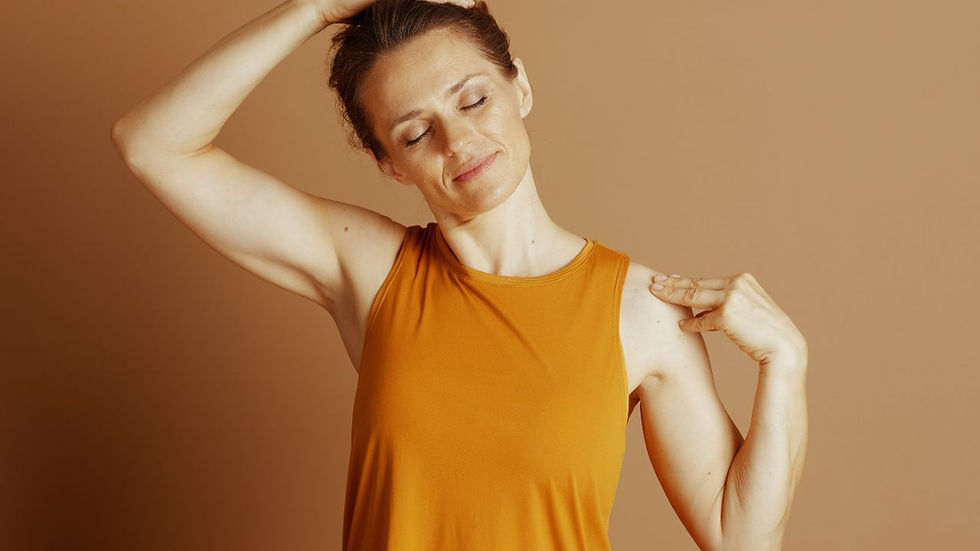"Unknot Your Neck: The Ultimate Guide to Upper Trapezius Muscle Relief -Step 1: The Test and Release"
- Ken Belveal
- Apr 22, 2024
- 2 min read


Millions of people work at a desk all day long spending countless hours hunched over a laptop, absorbed in work, only to be rudely awakened by a stiff, aching neck. Sound familiar? The culprit is the often overlooked but ever-so-important upper trapezius muscle. These muscles, stretching from the back of your neck down to your shoulders, bear the brunt of our daily stresses and poor posture habits. Today, I'm excited to share the first step to help you find relief from upper trapezius tension. In this article I will discuss how to test if you have a tight upper trapezius and how to release it. This should provide relief right away from the tension in your upper traps.
Symptoms
If you have the following symptoms, it may be because your upper trapezius muscles are to blame:
Headaches at the base of your skull.
Tension across the shoulder girdle.
Pain between your shoulder blades.
Difficulty rotating or tilting your head.
If any of these things are familiar to you perform the following tests:
Sit tall then slowly rotate your head to the right as far as you can without moving your shoulders. You should be able to rotate 80 degrees or almost be able to look directly over your shoulder. Repeat the movement to the left. Is it tight or painful when you do it?
Sit tall then slowly tilt your head to the right side. You should be able to tilt 35-45 degrees to the side. Repeat other side. Look in a mirror for feedback. Is there tightness or pain when performing the movement?
Even if you past both tests with flying colors, your upper traps still might benefit from the following release:
Stand with your back against a wall with your feet approximately 1-2 feet away from the wall.
Place a tennis ball or lacrosse ball between the wall and the top of your upper trapezius half-way between your shoulder and neck.
Lift your buttocks off the wall to put pressure on the upper trapezius.
The tension/pain level should be between 5-8 out of 1-10. If it's not, root around either slightly up or down or side-to-side to find the tender spots.
Hold here for :30-2:00 or until there is just pressure but no pain.
Repeat other side.
Perform at least once a day.
Once completed your neck should feel easier to move, less painful and your range of motion should improve. Test it again to see.
Now that you're feeling better it's time to look into why your neck is feeling this way. One possible reason is how your office is set up. Is it ergonomically set for you? Is the top of your monitor eye level? Does your chair offer you support for your spine? If not, invest some money so you can reap the health rewards.
The next blog I will show you step 2 on how to find further relief from upper trapezius issues.
Enjoy!
Ken








Comments